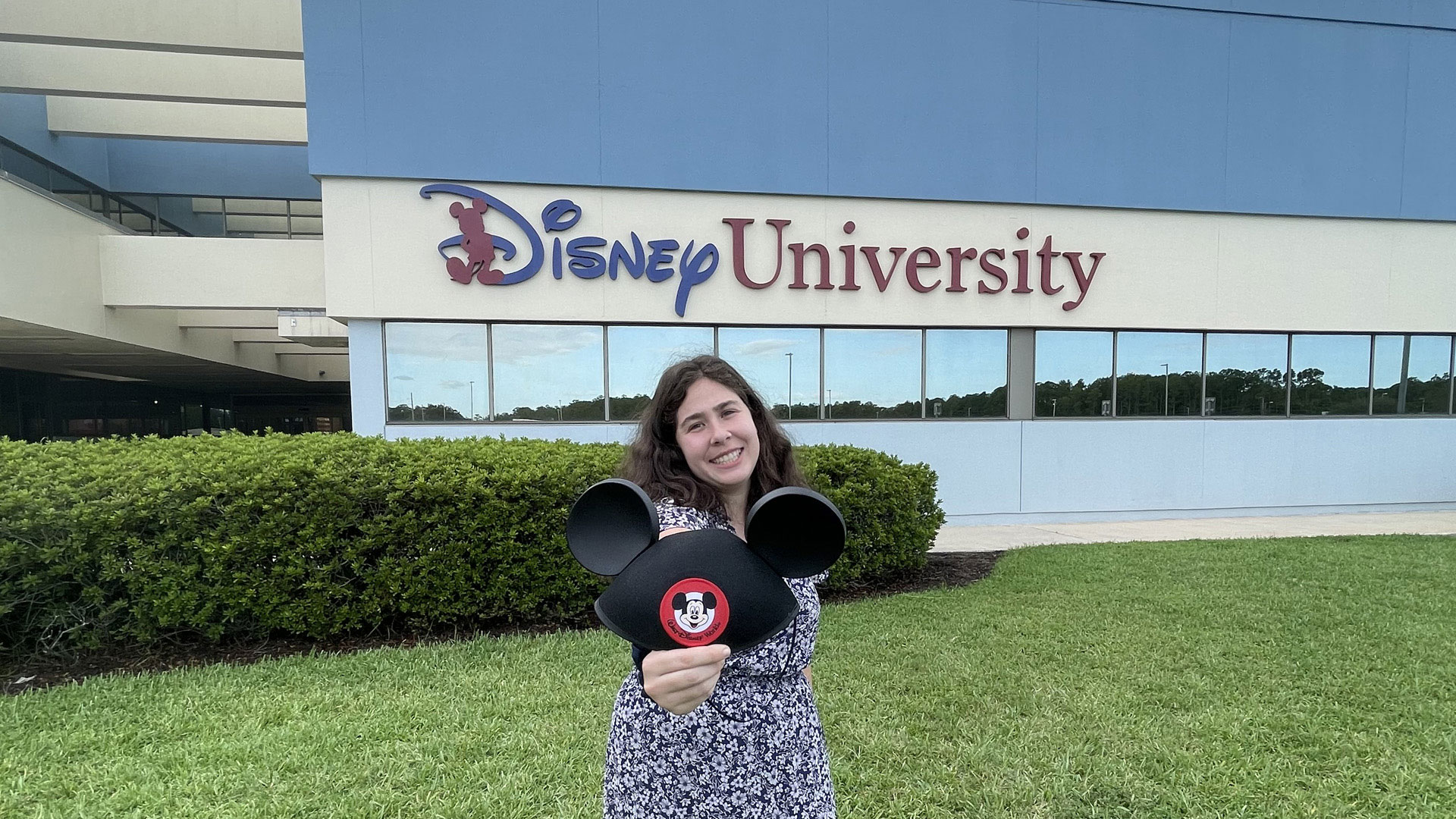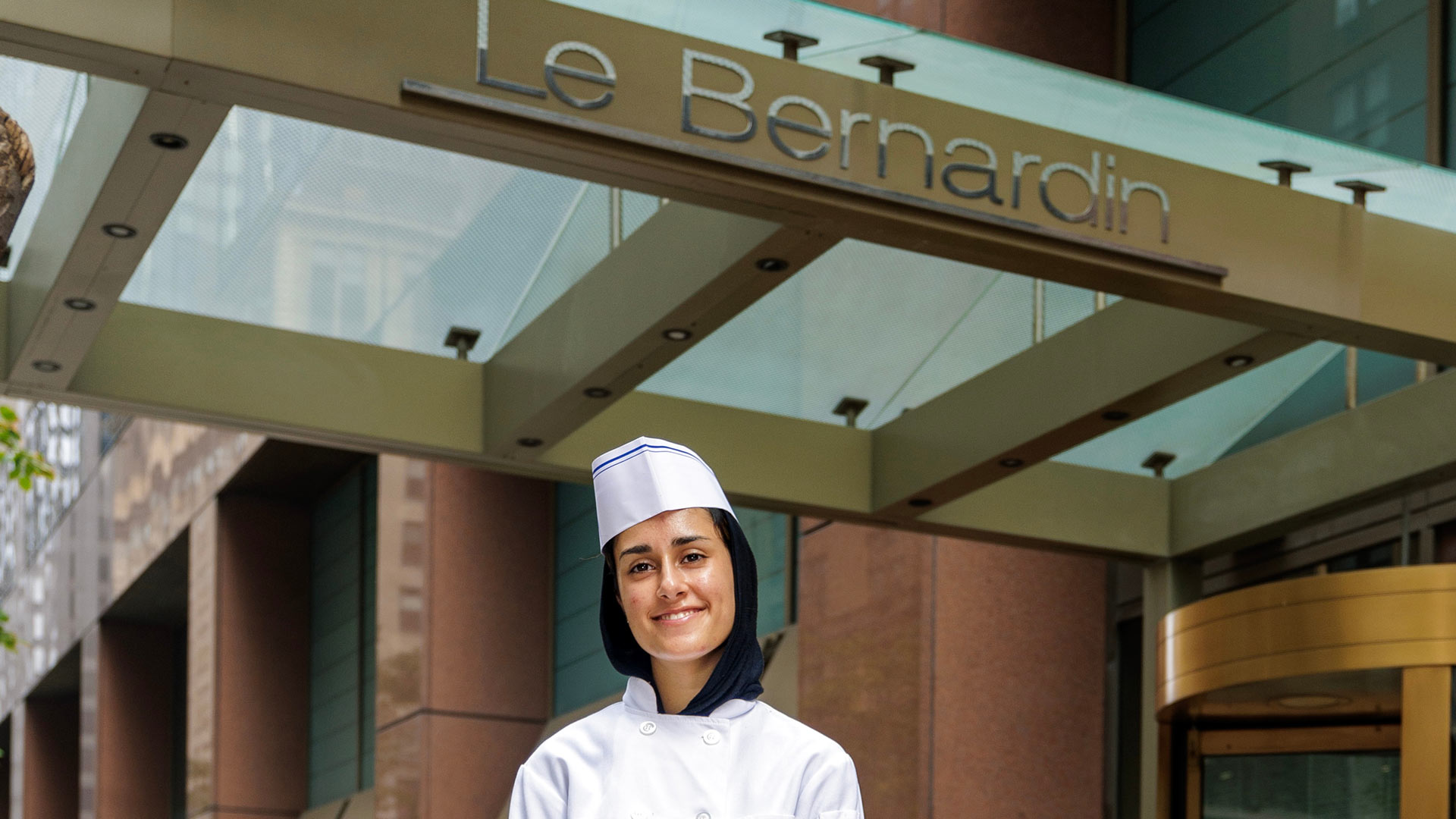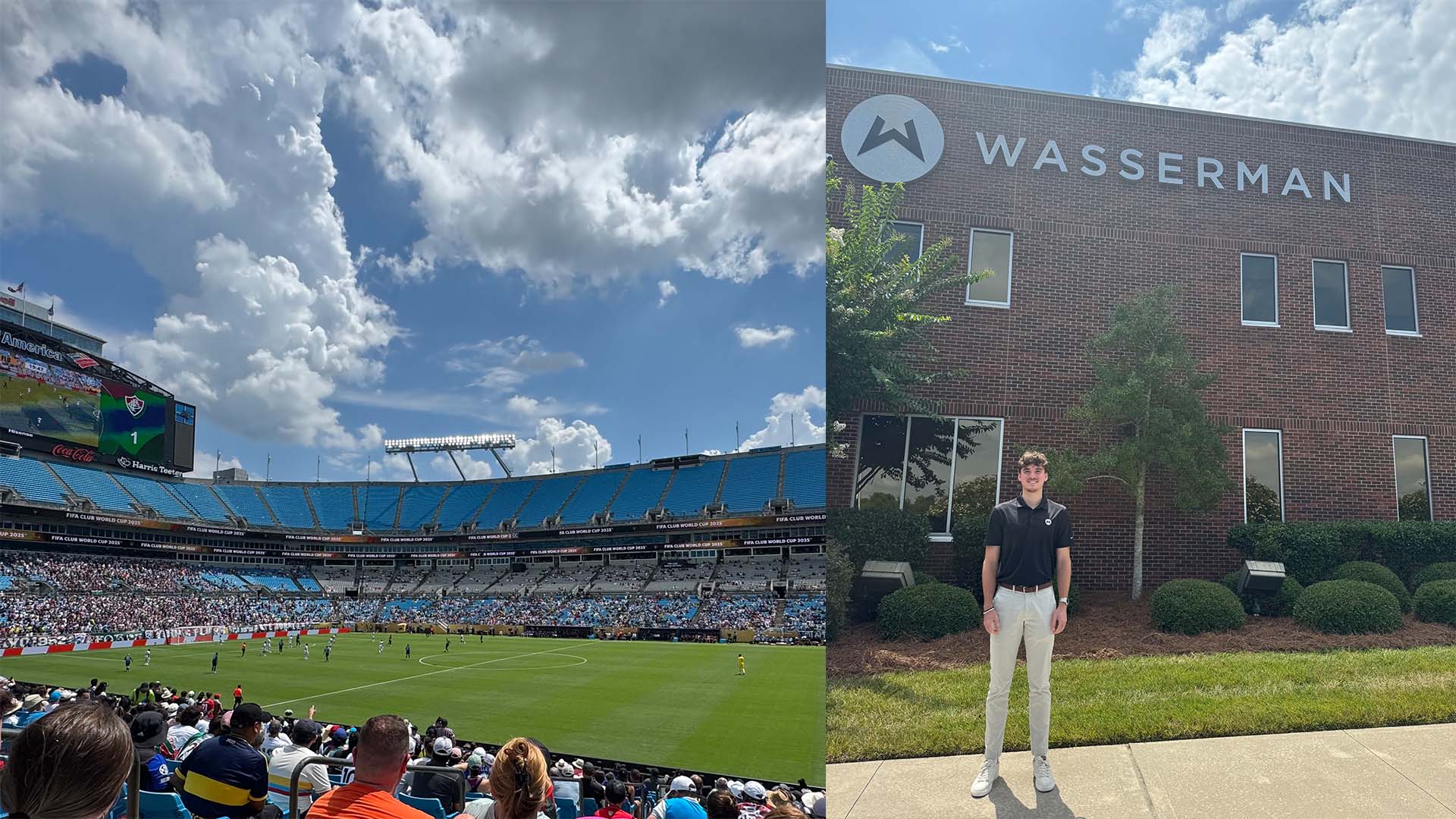Biology Students, Professors Delve into Algae Research
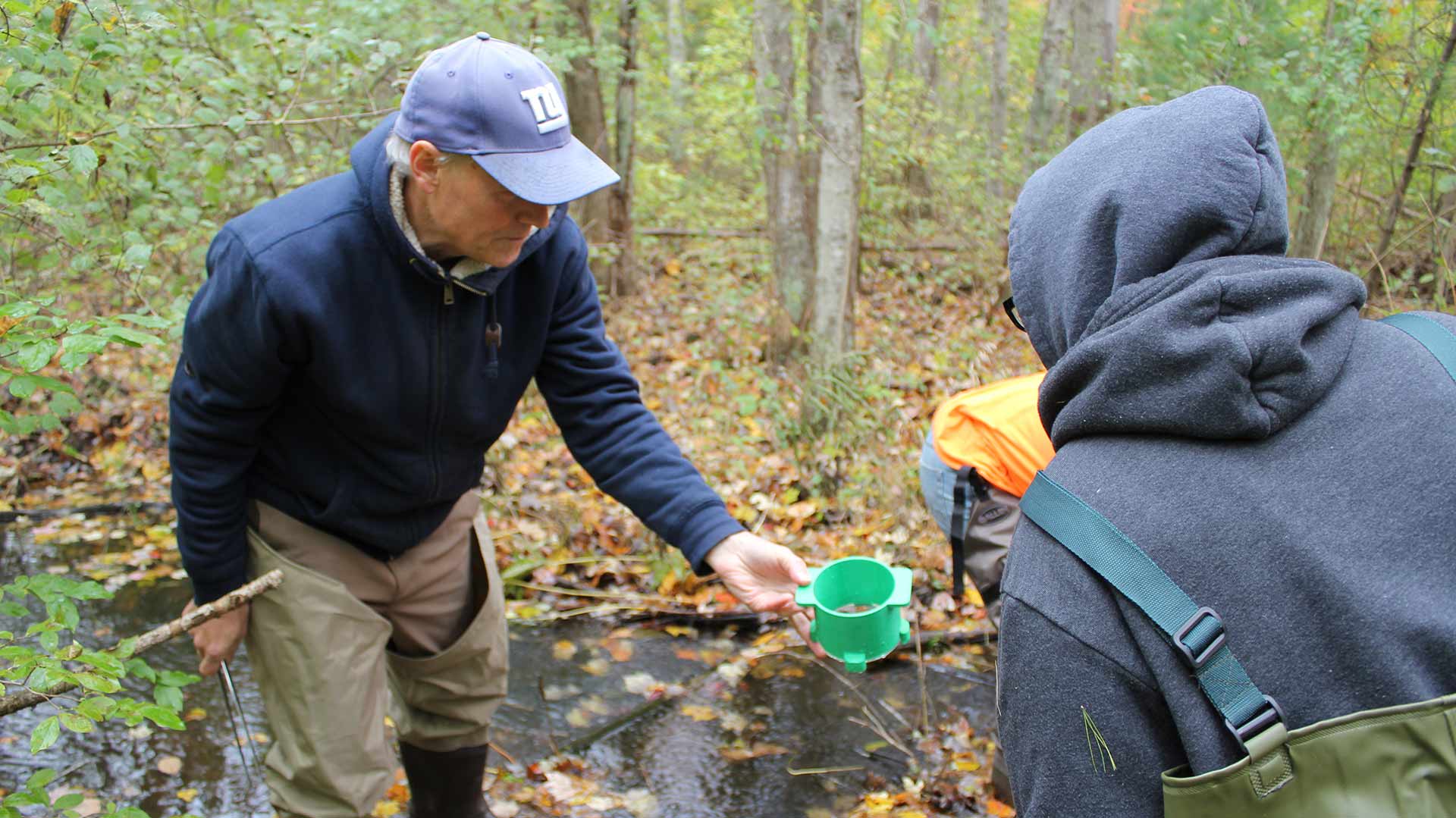
JWU students looking at careers in medicine are finding a unique way to prepare for the rigors of that endeavor – algae research.
Because of the techniques involved in the study of algae, Professors Christos Dimos and Donald Kaczmarczyk of the Science Department have developed an independent research project for students wishing to gain experience in lab research, field work and environmental science. Selected students are already gaining new insights into experiences that can ultimately apply to their academic interests.
Over the course of three months, students measured stream parameters and collected algal specimens from three local streams, which were later identified in the lab. “First of all, we want to see if the water quality changes [from stream to stream],” Kaczmarczyk says. “Are there differences in those different types of environments? And does that relate to the types of algae that are present?”
This undergraduate research project provides students with valuable insight and experience into an aspect of science that is not often explored in pre-med or PA tracks.
Why Algae?
Algae are at the base of the food chain and are a good indicator of stream quality and pollution. “Most people don't know or think about them at all,” says Dimos, “but from an ecosystem perspective many are really based around these algae.”
“We’re all already using many different types of algal products without realizing it,” Kaczmarczyk adds. “Algal products are used as colorants in a variety of foods. Some are used as thickeners in things like soups and McDonald’s shakes. Algae are used in organic fertilizers and in many other products as well.”
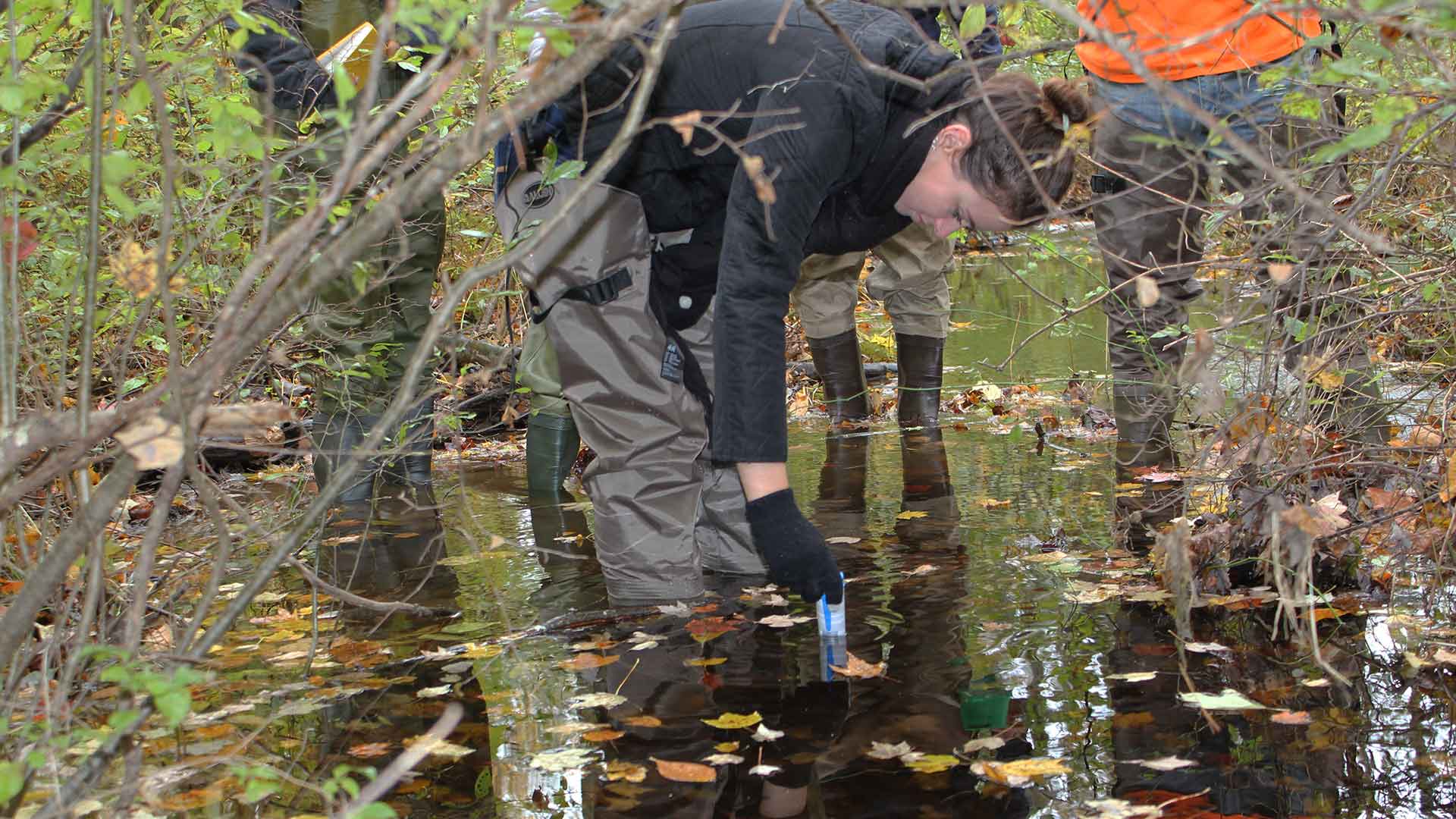
The four students chosen to participate in this study did not know much about algae coming into it. As three of the four students plan to pursue medical careers, algae — quite frankly — didn’t seem like interesting things to study. However, all four were excited to gain experience in field work, lab work, and independent study.
"We’re already using many different types of algal products without realizing it."
Balakisa Kaba ’20, Janice Oliveira ’20, Samantha DiPardo ’20 and Maddie Davis ’19, all biology majors, submitted applications and were chosen to participate in the study. “All four of these students have all excelled in their coursework,” says Dimos. “We gave them a framework of what we wanted done, and when we wanted it done. But then, ultimately, it's up to them.”
Part of the application process included writing an essay explaining why they wanted to participate. Dimos and Kaczmarczyk were careful to ensure that students weren’t looking to do this as simply a way to add to their resume. “Ultimately the combination of strong independent abilities, combined with their actual desire and curiosity to do a project like this is what mattered,” says Dimos.
The Study
Students worked in pairs to collect samples from three freshwater streams: on the JWU Equine Center property in Rehoboth, Massachusetts; a road-side stream in Rehoboth, Massachusetts; and another in the Elmhurst neighborhood of Providence, Rhode Island. They collected data on pH, specific conductance, water color and clarity, flow, temperature, percentage of algal cover, and more.
Students collected samples from three points in the stream, moving from downstream to upstream. After bagging the samples, the students headed to the lab to analyze their samples under the microscope. They would then label and categorize their findings.
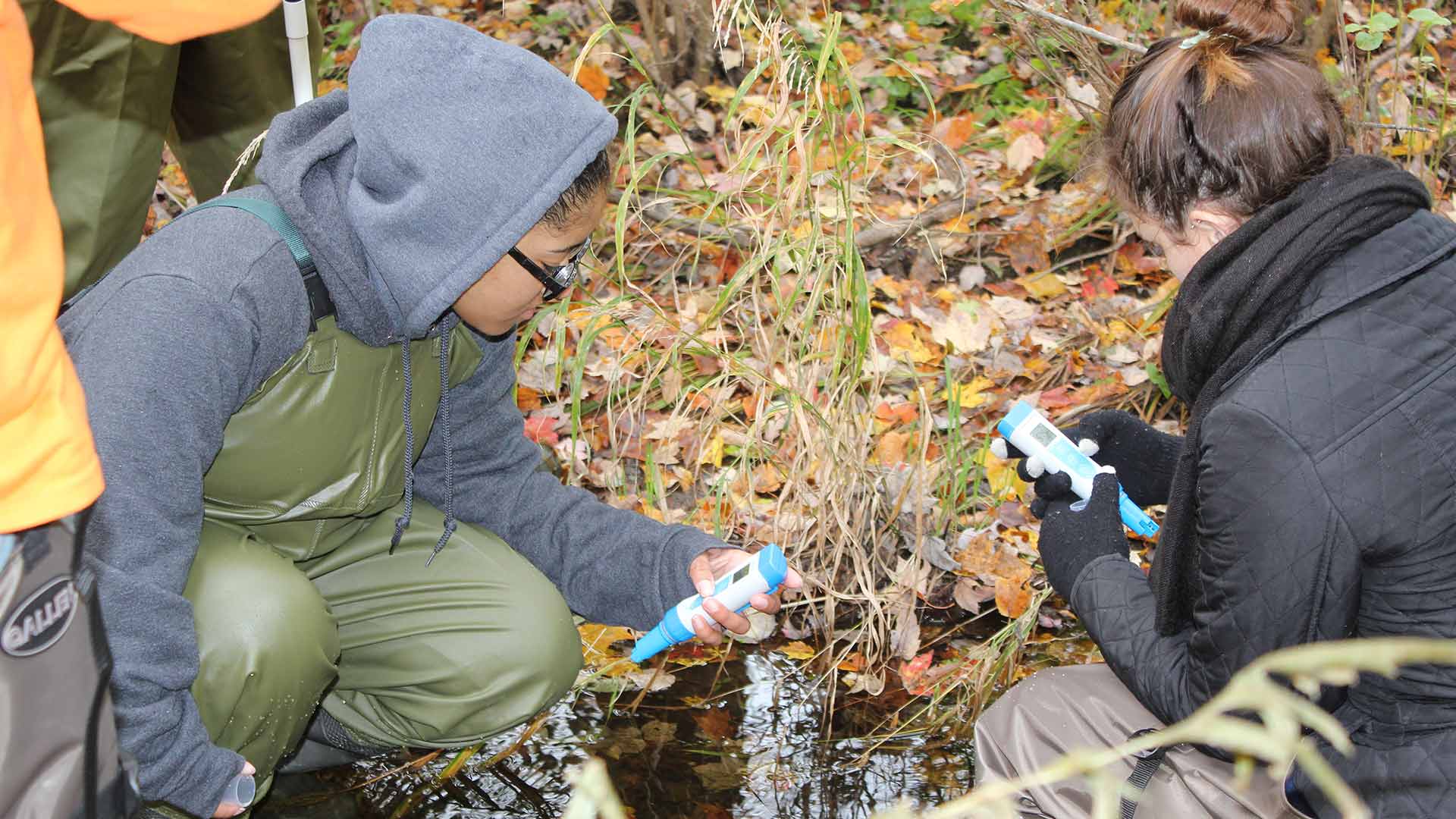
Fieldwork was a new experience for many of the students, and it could be tricky in the winter months. Although we had a mild winter this year, the temperature of the streams ranged from 2 degrees Celsius to 10 degrees Celsius. “I remember one time we went, because of the snow the downstream was really deep,” DiPardo says. “It was up to my head – a bit of a challenge.”
As the study progressed, students found their initial perspectives on algae changing. “It is such a big area of life to be studied and it’s just interesting to compare and contrast it to how they evolved, to how some species stopped and others continued to progress over time,” says Oliveira.
The Results
Preliminary results are in, and although it’s too early to form a conclusion based on them, the initial signs are positive. One particular item of note is the presence of red algae in the Elmhurst stream. Freshwater red algae are usually indicative of clean water because they do not tolerate high levels of pollution.
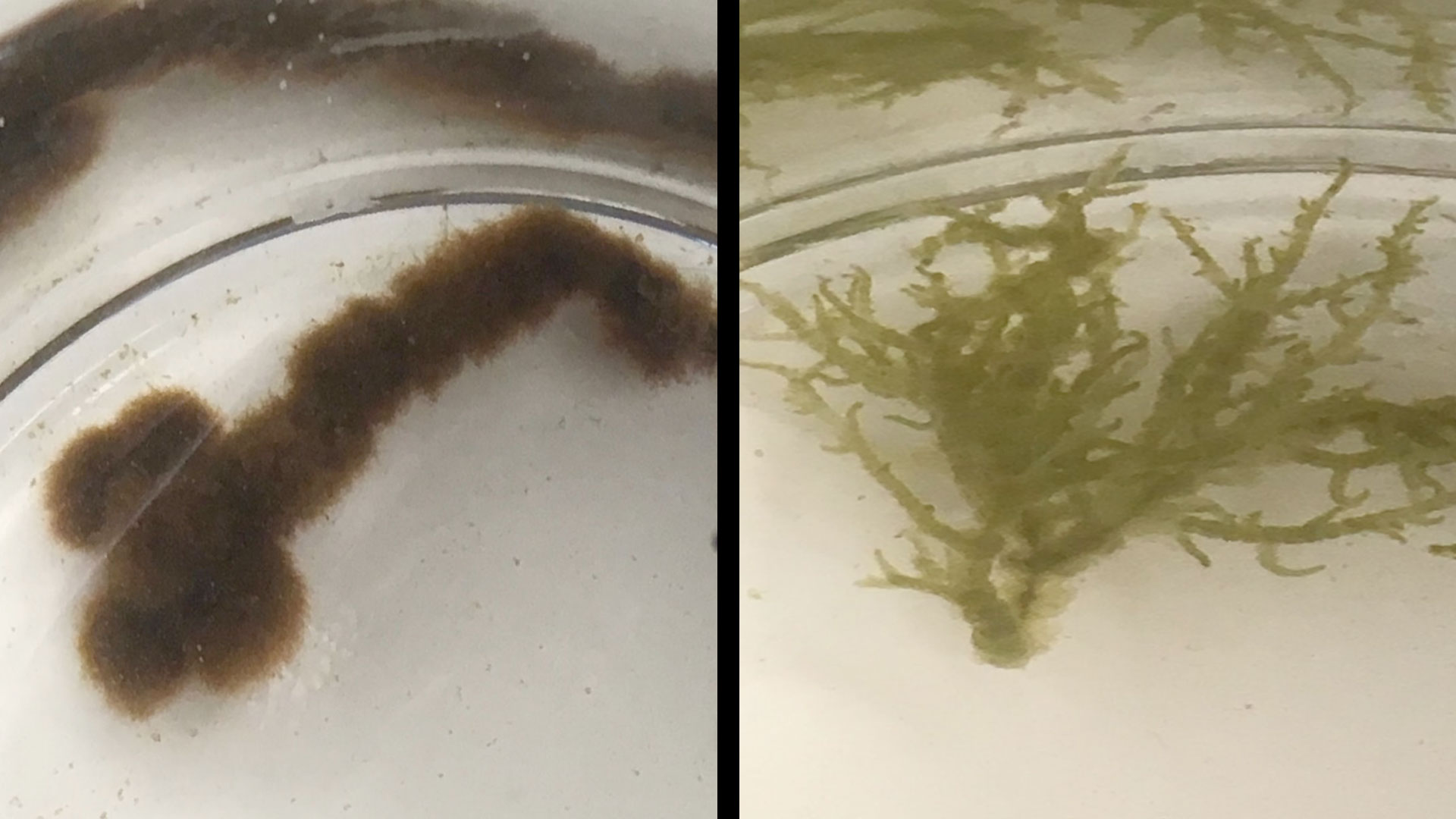
“The survey provided valuable preliminary data that can be used next year,” Kaczmarczyk says. “All three sites are suitable for more extensive student research projects next year and beyond.”
Twelve types of algae were found at the three stream sites — some were present in only one or two streams, while others were present in all three. As the data collection continues next year, results are expected to vary; because algae is photosynthetic, results will be different once there is more foliage surrounding the stream and blocking the sunlight from the streams.
Looking Ahead
Dimos and Kaczmarczyk plan to use the preliminary data to inform the study moving forward, and they’re making a few changes to the program. For example, stream physical property data will be collected weekly instead of monthly. This will create a more robust data set that will allow researchers to better analyze the physical properties of the streams. Algae specimens will continue to be collected monthly.
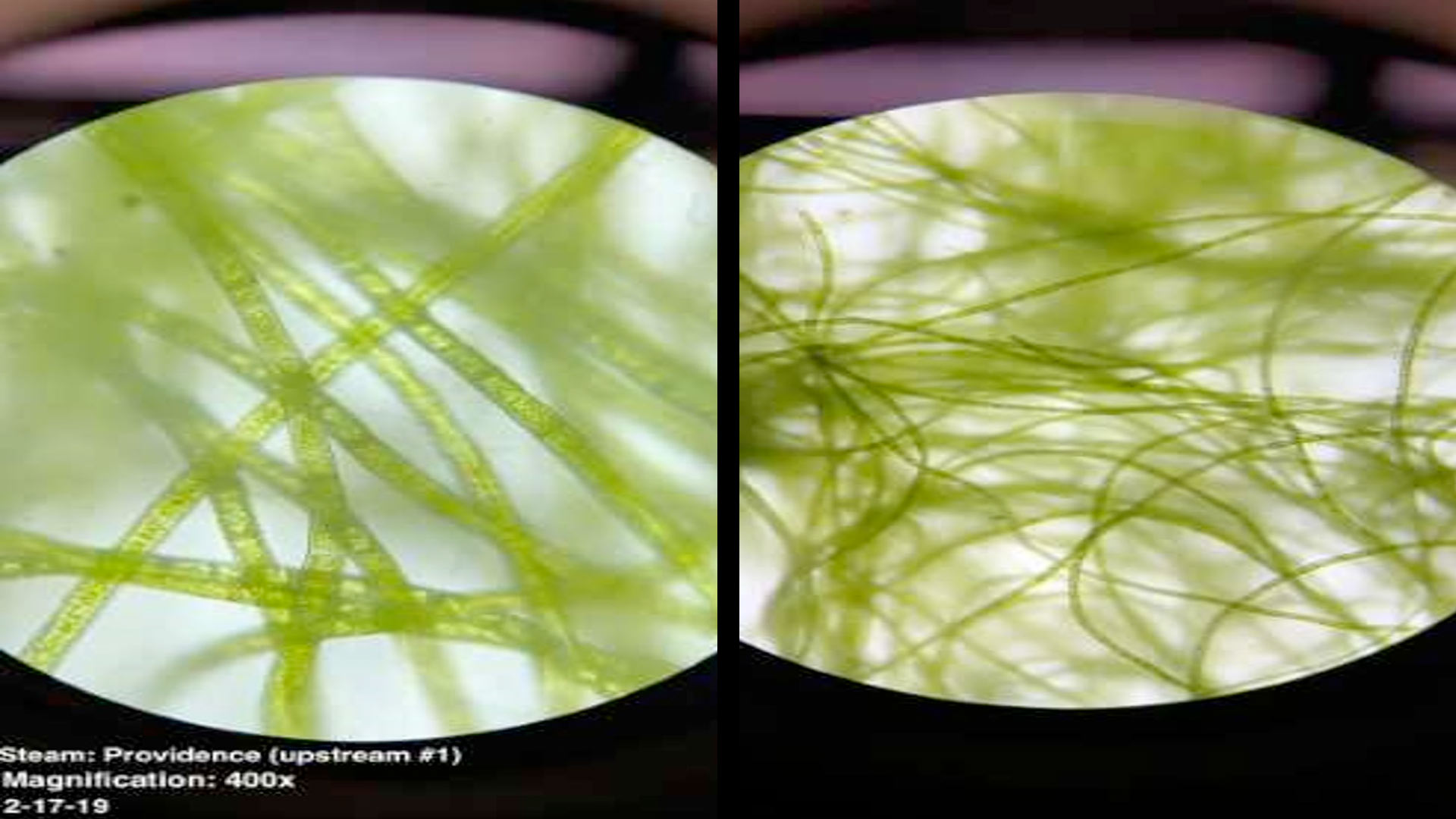
This year, four students participated in the study and worked in partnerships. While they were able to collect great data to start with, it was sometimes difficult to manage schedules and find times to meet at the streams together. Five students applied for the upcoming fall internship. Dimos and Kaczmarczyk will select two students for the fall and then offer the others the chance to work on the project in the winter and/or spring terms.
"Algae is such a big area of life to be studied."
Once the year-long study is conducted and results are analyzed, Dimos and Kaczmarczyk hope to work with students to present at a conference at the end of the year.
A Strong Program for JWU
This algae study is another in a long list of examples of the strength of the Science Department. Although the biology program is only five years old, it has already received abundant interest — enrollment grew from 51 students in 2015 to 130 in 2018. This increase in students has allowed professors to create new courses and opportunities — some specifically targeting medical research, and others — like this one — focusing on ecological and environmental research that allows for a component of laboratory research. Students have already benefited from the algae study, and in a few short months have had their perspectives change. “At the end of the day it might just sound like I’m picking up algae and putting it in a bag, but now I’m really looking at things from a more in-depth view,” says Kaba.
Currently, many biology students aspire to move on to PA school or medical school. Dimos notes that studies like this make our students well rounded biologists, and provides opportunities for students interested in conservation and field biology to flourish in our program. “We are beginning to focus more on environmental studies and ecology,” he says.
As for the students, the experience proved to be more than something to add to their resumes. “I didn't have much interest in algae at first, but it's always interesting to learn something new and I do enjoy that,” says Davis. “I think you can't be a good scientist unless you enjoy learning.”
